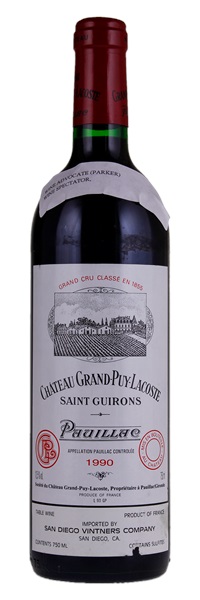Estimate

...gorgeously sweet, pure nose of creme de cassis, spring flowers, and a hint of wet rocks. The wine is full-bodied, plush, and expansive with impressive levels of glycerin and purity as well as an endearing texture...
Big and juicy red. Dark color, with coffee bean and chocolate aromas. Full-bodied and velvety, with loads of ripe fruit and a long, flavorful finish.--1990 Bordeaux retrospective. Drink now through 2010.
...Big and sweet and round - seems fuller, richer and a bit older and dustier than the 1989 served alongside. Very long and powerful. Wonderfully rich and opulent. Sweet and perhaps a little bit simpler than the 1989..